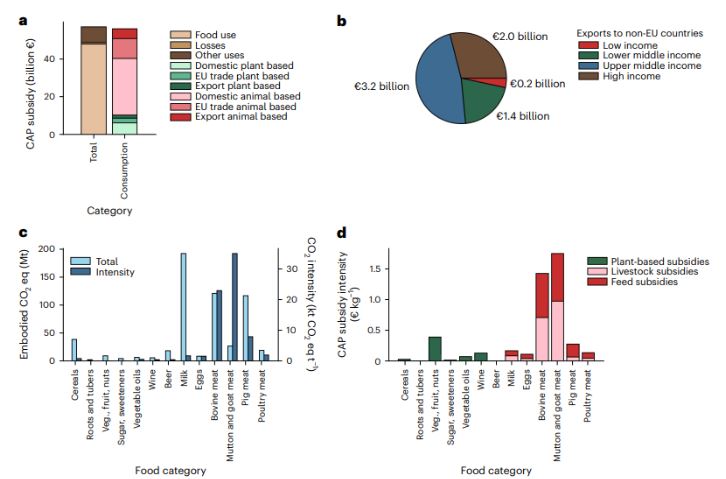April 01, 2024 | Nature Food | Source |
Introduction: Researchers from Leiden University in the Netherlands employs a comprehensive approach, combining global input-output datasets with subsidy data to track the flow of subsidies across the food supply chain under the Europen Unions Common Agricultural Policy.
Key findings: The European Union's Common Agricultural Policy (CAP) directs a substantial portion of its subsidies towards animal-based foods, comprising 82% of agricultural subsidies. Despite the relatively lower contribution to caloric and protein intake in the EU, animal products generate 84% of greenhouse gas emissions. The analysis reveals the imperative need to reforming the CAP to incentivize sustainable agriculture and dietary practices for mitigating climate change and ensuring the long-term viability of the food system. By redirecting subsidies towards more environmentally friendly practices and plant-based diets, the CAP could play a crucial role in addressing climate change and enhancing food security.
Figure | Overview of CAP subsides in the European Union in relation to food types, international exports, emissions and subsidy intensities. a, Total CAP budget (left bar) and total EU27 + UK domestic food consumption and trade by animal- and plant-based foods (right bar). b, Exports to non-EU countries by income level of the importing country. c, Embodied CO2 equivalent (CO2eq) (in global warming potential over 100 years (GWP100)) by food category in total (light blue, left axis) and per mass (dark blue, right axis). Veg., vegetables. D, Subsidy intensity of food categories in euro per kilogram of retail weight in 2013.





